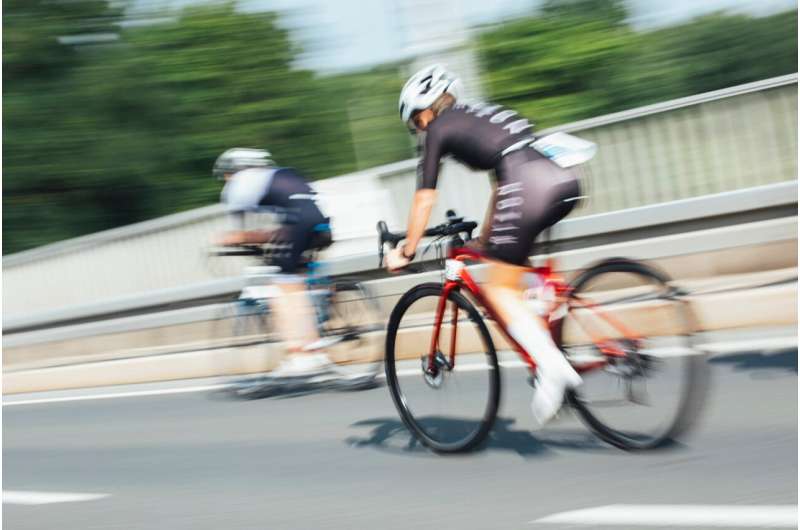This article has been reviewed according to Science X's editorial process and policies. Editors have highlighted the following attributes while ensuring the content's credibility:
fact-checked
trusted source
proofread
Algorithm takes on photographic motion blur

One of the many problems faced by a wide range of photographers in wildlife, sports, celebrity and theatrical photography, and even industrial testing and medical photography is the issue of motion blur. This occurs when the subject is moving and the camera's shutter speed is too slow to "freeze" the action. There are approaches that anyone processing photographs can take to reduce the distortion known as motion blur and there is some software that can reduce the effect considerably. However, there is always room for improvement.
Research published in the International Journal of Cybernetics and Cyber-Physical Systems introduces a sophisticated algorithm, the SRN algorithm of feature fusion. This algorithm has been designed to address the complex issue of image motion blur. The algorithm developed by Junjia Bi, Lingxiao Yang, Jingwen Zhang, and Jianjun Zhang of the School of Electrical Engineering and Automation at Henan Polytechnic University in Jiaozuo, Henan, China, takes a comprehensive approach to improving deblurring performance by incorporating several innovative techniques.
The study's first key component is the attention residual module, strategically designed to enhance channel attention between residual units. This addition aims to improve the model's ability to extract features from input data, the digital image. This is crucial for mitigating the effects of motion blur in a photograph. The team then builds on this approach using a feature pyramid structure to strengthen the network's representation capabilities, enabling the model to capture details at various scales.
With this in place, the system then enhances the deblurring effect by using a multi-scale coordinate attention feature fusion structure. This component refines the model's ability to recover detailed textures, especially when tested on foreign object datasets. The results demonstrate the effectiveness of the proposed algorithm, with a peak signal-to-noise ratio approaching 34.72 dB and a Structural Similarity Index of 0.97.
The researchers have tested their algorithm by optimizing the loss function, focusing on discrete points. This optimization improves the model's stability and expands its applicability in real-world scenarios. An evaluation of deblurring of images from the GOPRO dataset highlights the algorithm's superiority compared to other methods, the team reports. When applied to foreign object datasets, the algorithm exhibits a substantial improvement in both PSNR and SSIM metrics, indicating superior performance in detailed texture recovery.
Motion deblurring can help photographers rescue images that would otherwise be unusable in a wide range of settings. Beyond the obvious areas of photography, such as wildlife and sports, deblurring could help improve surveillance imaging and image gathering by autonomous vehicles and robots.
More information: Junjia Bi et al, Image deblurring method based on feature fusion SRN, International Journal of Cybernetics and Cyber-Physical Systems (2023). DOI: 10.1504/IJCCPS.2023.133728





















